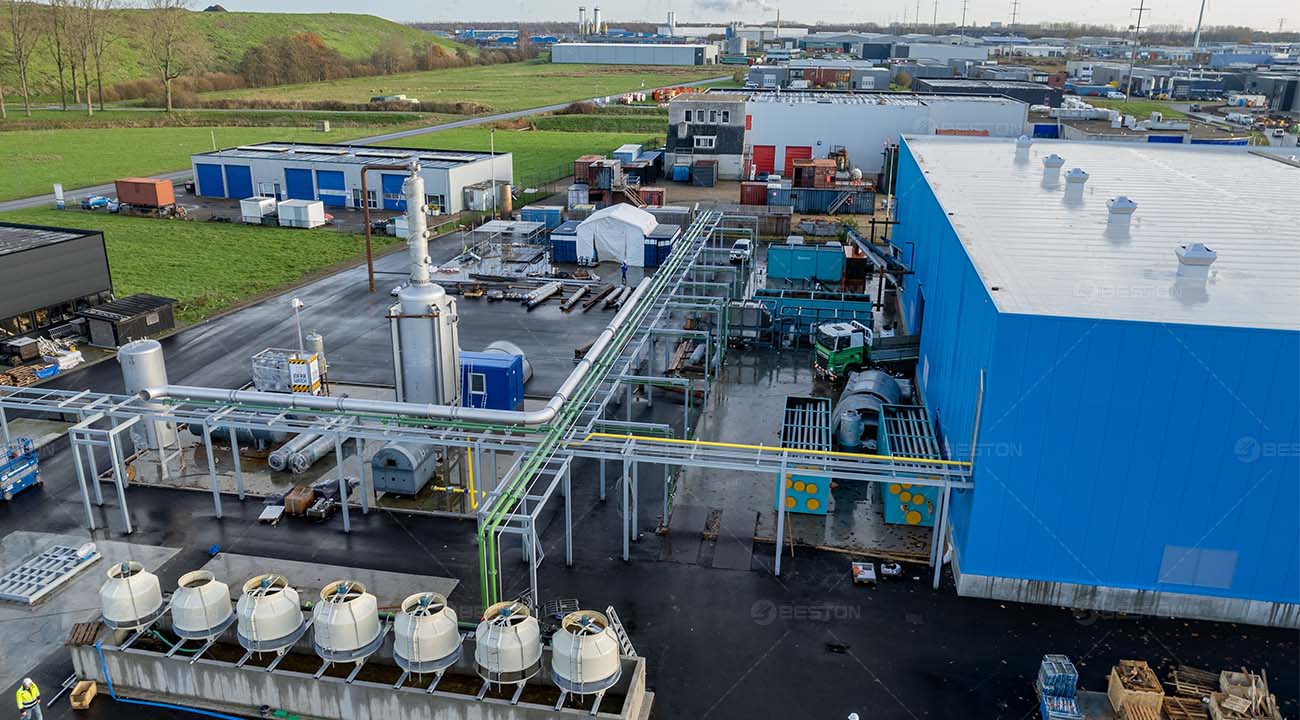In the ever-evolving landscape of industrial waste management, the oil sludge pyrolysis plant stands out as a formidable solution, addressing the intricate challenges posed by oily hazardous waste. This innovative approach harnesses the power of pyrolysis, a process that holds the key to transforming complex hydrocarbons into valuable resources.
The Essence of Pyrolysis
At its core, pyrolysis is a thermochemical decomposition of organic materials at elevated temperatures in the absence of oxygen. This method excels in breaking down the molecular structures of oil sludge, effectively converting the hazardous waste into useful byproducts. The oil sludge pyrolysis plant becomes a nexus of efficiency and environmental responsibility.
The process involves subjecting the oil sludge to intense heat within a controlled environment, instigating a cascade of chemical reactions. The resulting breakdown yields three primary outputs: liquid oil, solid char, and combustible gas. Each constituent serves a distinct purpose, contributing to the comprehensive remediation of oily waste.

Unraveling the Outputs
Liquid Oil
The liquid oil extracted from the pyrolysis of oil sludge is a versatile substance with multifaceted applications. Refined and processed, it finds utility as fuel for various industrial processes, reducing dependence on traditional fossil fuels. This liquid derivative proves invaluable, embodying a shift towards sustainable energy practices.
Solid Char
The solid char, a carbon-rich residue, emerges as an invaluable resource in the realm of industrial applications. Its porous structure and chemical composition make it an ideal candidate for soil improvement and carbon sequestration initiatives. Incorporating solid char into agricultural soils enhances their fertility, fostering sustainable land management practices.
Combustible Gas
The combustible gas generated during oil sludge pyrolysis isn’t merely a byproduct; it is a potential energy source. This gaseous output, enriched with hydrocarbons, can be harnessed for onsite energy generation or utilized as a supplementary fuel in industrial processes. The utilization of this combustible gas exemplifies the circular economy concept, extracting maximum value from every facet of the waste.
Operational Efficiency
The design and functionality of the oil sludge pyrolysis plant underscore a commitment to operational efficiency. The integration of cutting-edge technologies ensures a seamless and controlled pyrolytic process, maximizing the yield of valuable byproducts while minimizing environmental impact.
The automated control systems embedded in pyrolysis plants enable precise regulation of temperature, residence time, and pressure. This level of precision not only enhances the quality of the outputs but also ensures compliance with stringent environmental regulations. The result is a harmonious synergy between industrial processes and ecological responsibility.
Environmental Stewardship
The adoption of oil sludge pyrolysis as a waste treatment solution epitomizes a proactive approach to environmental stewardship. By mitigating the adverse effects of hazardous waste through controlled and resourceful means, industries align themselves with the principles of sustainability.
The reduction in landfill-bound waste, coupled with the generation of reusable resources, represents a paradigm shift in waste management practices. The oil sludge pyrolysis plant stands as a testament to the industry’s capacity to evolve, embracing technologies that redefine the boundaries of environmental responsibility.
Conclusion
In the labyrinth of industrial waste management, the oil sludge pyrolysis plant emerges as a beacon of innovation and efficiency. Through the application of pyrolytic principles, this solution transforms oily hazardous waste into valuable resources, minimizing environmental impact and maximizing operational returns.
As industries navigate the complex landscape of waste treatment, the integration of pyrolysis technology becomes a pivotal step towards sustainable practices. It not only addresses the immediate challenges posed by oil sludge but also heralds a future where waste is not merely discarded but strategically repurposed for the benefit of both industry and environment.

Comments
No comments yet. Be the first to react!